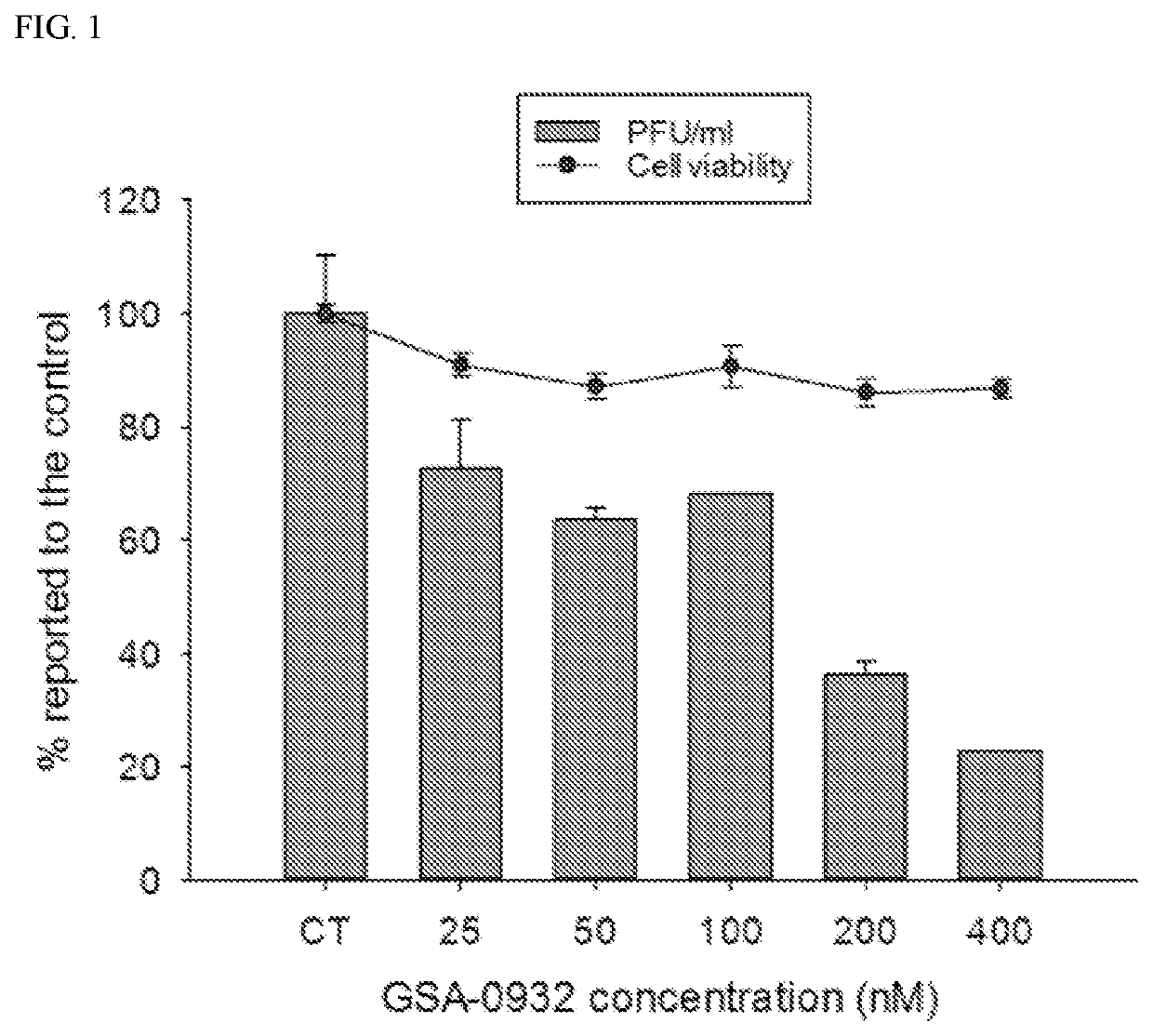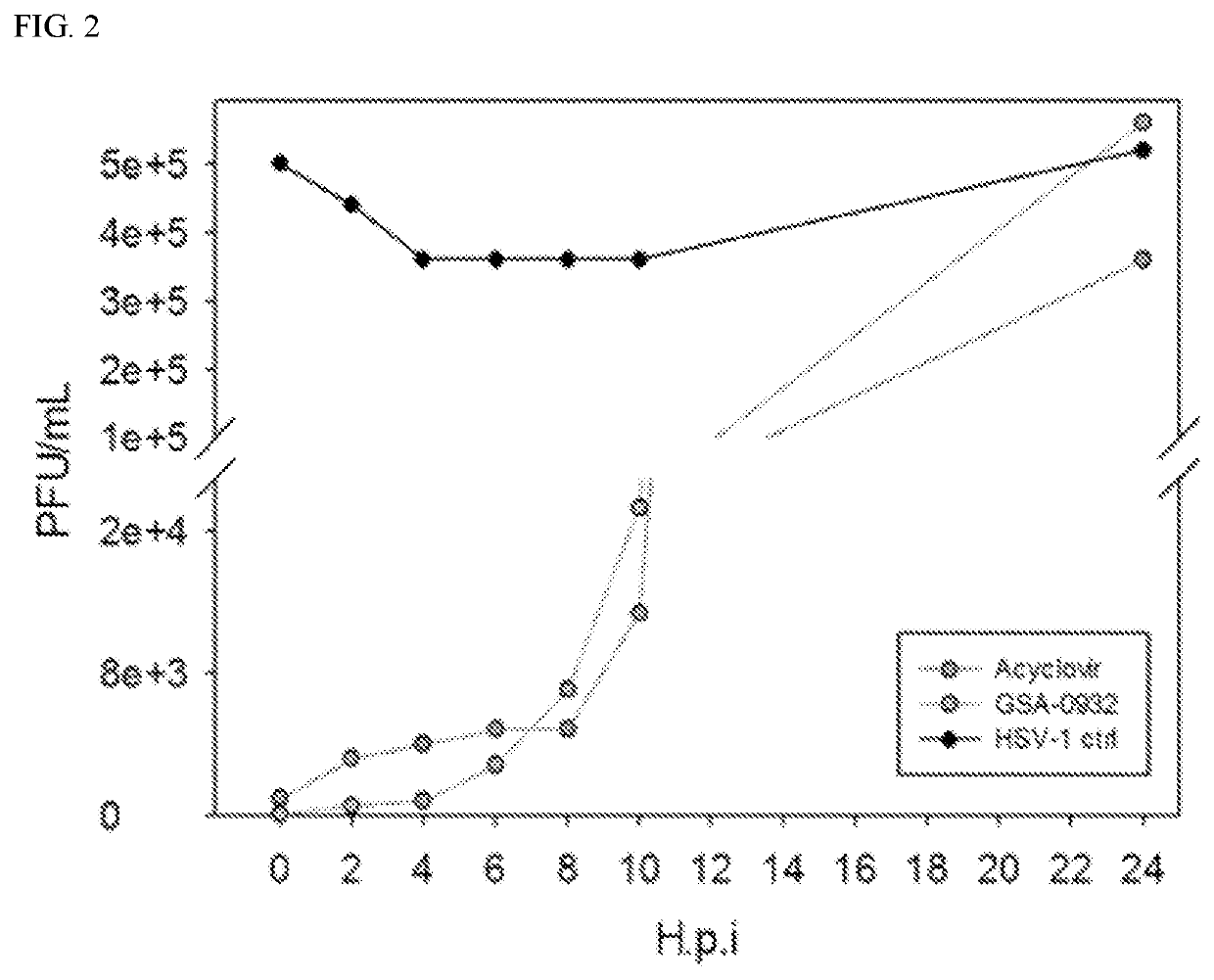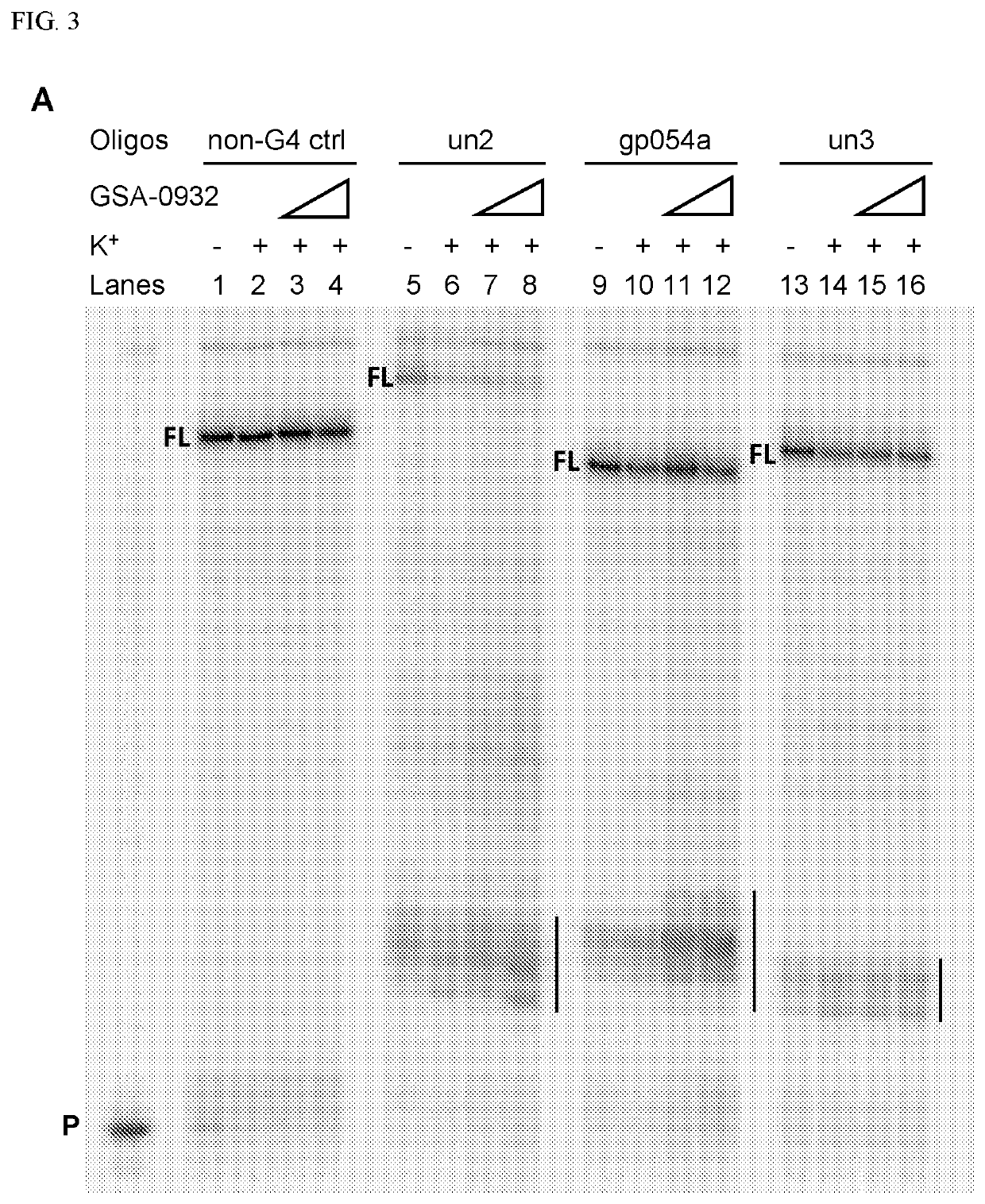Uses of compounds having Anti-hsv-1 activity
a technology of compounds and anti-hsv, which is applied in the field of compounds having anti-hsv1 activity, can solve the problems of two-fold increase in the hiv transmission rate, particularly in the case of newborn infants and immunosuppressed individuals, and achieve the effect of stabilizing the g-quadruplex structur
- Summary
- Abstract
- Description
- Claims
- Application Information
AI Technical Summary
Benefits of technology
Problems solved by technology
Method used
Image
Examples
examples
[0160]The following examples are illustrative, but not limiting, of the compounds, compositions, and methods of the present invention. Other suitable modifications and adaptations of the variety of conditions and parameters normally encountered in clinical therapy and which are obvious to those skilled in the art are within the spirit and scope of the invention.
example i
[0161]This example demonstrates that quindoline-derived compounds display significant anti-HSV activity.
[0162]Quindoline-derived compounds were first screened for their anti-herpetic activity. Increasing concentrations of compounds (from 25 to 400 nM) were added to U2OS cells infected with wild-type HSV-1 strain F at a MOI of 1. Supernatants were collected at 24 hours post infection (h.p.i.) and the reduction of viral particles production was determined by plaque reduction assay (PRA) (see, Artusi S., et al., Antiviral Res. 2015; 118:123-31; Callegaro S., et al., Sci. Rep. 2017; 7: 2341). Antiviral activities were determined as the concentration of compounds able to perform 50% inhibition of HSV-1 production (IC50). Cytotoxicity effects were evaluated in parallel by MTT assay and reported as the concentration of compounds able to kill 50% of the cells (CC50). The selectivity index (SI) was calculated as the ratio of CC50 to IC50. IC50, CC50 and SI values are reported in Table II.
TAB...
example ii
[0164]This example demonstrates that the lead compound GSA-0932 acts in early events of the viral life cycle.
[0165]To assess the main and temporally last viral step targeted by the most promising compound, GSA-0932, a time of addition (TOA) assay was performed (see, FIG. 2) (see, Artusi S., et al., Antiviral Res. 2015; 118:123-31; Callegaro S., et al., Sci. Rep. 2017; 7: 2341; Daelemans D., et al., Nat. Protoc. 2011; 6(6):925-33). This experiment permits determination of how long the addition of a compound can be postponed before it loses its antiviral activity. Since the HSV-1 replication cycle proceeds in a well-established chronological order, it is possible to investigate the last viral process targeted by a compound comparing its action to that of a reference drug in the time frame of replication events. The well characterized anti-HSV drug Acyclovir (ACV) was considered as reference (see, Artusi S., et al., Antiviral Res. 2015; 118:123-31; Callegaro S., et al., Sci. Rep. 2017;...
PUM
| Property | Measurement | Unit |
|---|---|---|
| concentration | aaaaa | aaaaa |
| HIV transmission rate | aaaaa | aaaaa |
| resistance | aaaaa | aaaaa |
Abstract
Description
Claims
Application Information
 Login to View More
Login to View More - R&D
- Intellectual Property
- Life Sciences
- Materials
- Tech Scout
- Unparalleled Data Quality
- Higher Quality Content
- 60% Fewer Hallucinations
Browse by: Latest US Patents, China's latest patents, Technical Efficacy Thesaurus, Application Domain, Technology Topic, Popular Technical Reports.
© 2025 PatSnap. All rights reserved.Legal|Privacy policy|Modern Slavery Act Transparency Statement|Sitemap|About US| Contact US: help@patsnap.com



